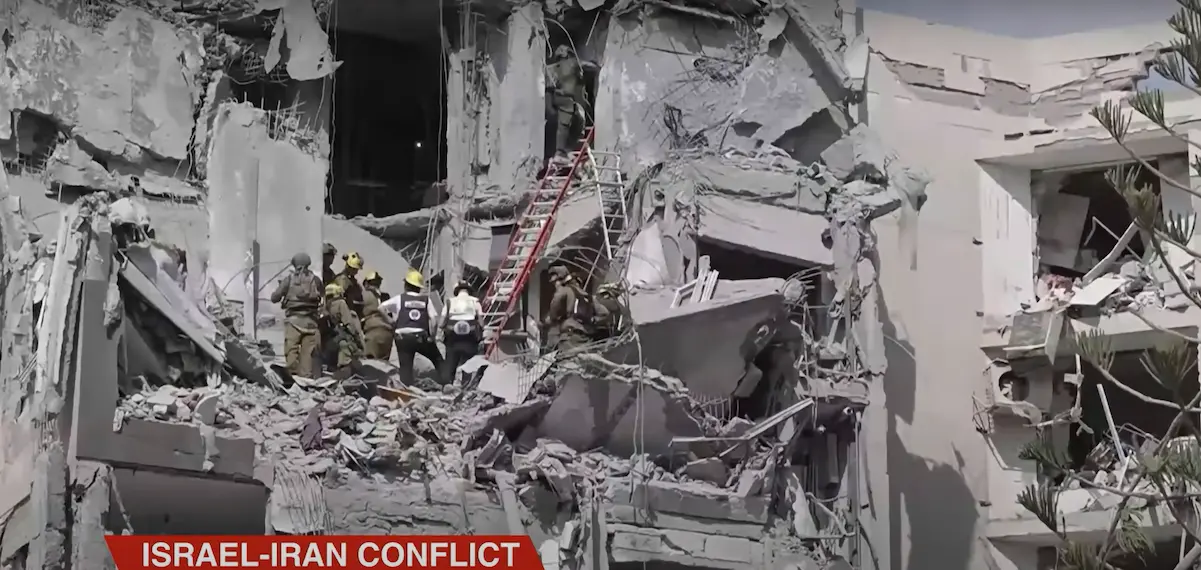
The precision airstrikes come amid a fragile ceasefire and escalating regional tensions.(videograb)
Operation Rising Lion: Israel’s Pre-emptive Strike in Western Iran
Precision Strike – In the early hours of June 24, 2025, the Israeli Air Force (IAF) executed a high-precision airstrike on missile launchers stationed in western Iran. According to the Israel Defense Forces (IDF), the launchers were “ready to be fired” at Israeli territory and were neutralized just moments before activation.
Table of Contents
The strike was part of Israel’s broader Operation Rising Lion, a military campaign launched in response to Iran’s escalating missile attacks over the past two weeks. The IDF released footage showing the destruction of the launchers, emphasizing that the operation was defensive in nature and aimed at preventing further civilian casualties in Israel.
This latest action follows a barrage of Iranian ballistic missiles that struck Israeli cities, including a deadly hit on an apartment complex in Beersheba that killed four civilians and injured several others. The IDF stated that the targeted launchers were part of the same offensive wave and posed an imminent threat.
Ceasefire in Name Only? Truce Tested by Missile Fire
The airstrike came just hours after former U.S. President Donald Trump announced a “complete and total ceasefire” between Israel and Iran. Under the agreement, Iran was to halt hostilities first, followed by Israel 12 hours later. However, the IDF claims Iran violated the truce by preparing additional missile launches, prompting the retaliatory strike.
Military officials in Tel Aviv argue that the ceasefire was already compromised by Iran’s actions. “We will not wait for missiles to fall on our cities before we act,” said an IDF spokesperson. “This was a necessary and proportionate response to an ongoing threat.”
Iran, meanwhile, has not officially acknowledged the destruction of its missile platforms but has accused Israel of undermining the ceasefire. Tehran maintains that its military actions are in response to Israeli aggression and U.S. involvement in the conflict.
The fragile truce now hangs in the balance, with both sides accusing each other of violations. Diplomatic efforts by Qatar and the United Nations continue, but the situation remains volatile.
Strategic Impact: Aerial Superiority and Regional Ramifications
The successful strike highlights Israel’s growing aerial dominance in the region. According to military analysts, the IAF’s ability to detect, target, and destroy missile platforms deep inside Iranian territory demonstrates not only technological superiority but also robust intelligence capabilities.
Reports suggest that Israel has now destroyed nearly one-third of Iran’s missile launchers since the conflict began. This includes mobile platforms, underground silos, and command centers. The IDF claims to have achieved “full operational freedom” in Iranian airspace, a claim that, if true, marks a significant shift in the regional power balance.
The operation also sends a clear message to Iran’s allies and adversaries alike: Israel will not hesitate to act preemptively to protect its citizens. However, the risk of escalation remains high. With Iran vowing retaliation and the U.S. maintaining a military presence in the region, the potential for a broader conflict looms large.
As the world watches, the skies over the Middle East remain tense. Whether this strike will deter further aggression or ignite a new wave of violence is a question only time and diplomacy can answer.
Stay updated with the latest news on Rapido Updates. Keep yourself updated with The World, India News, Entertainment, Market, Automobile, Gadgets, Sports, and many more